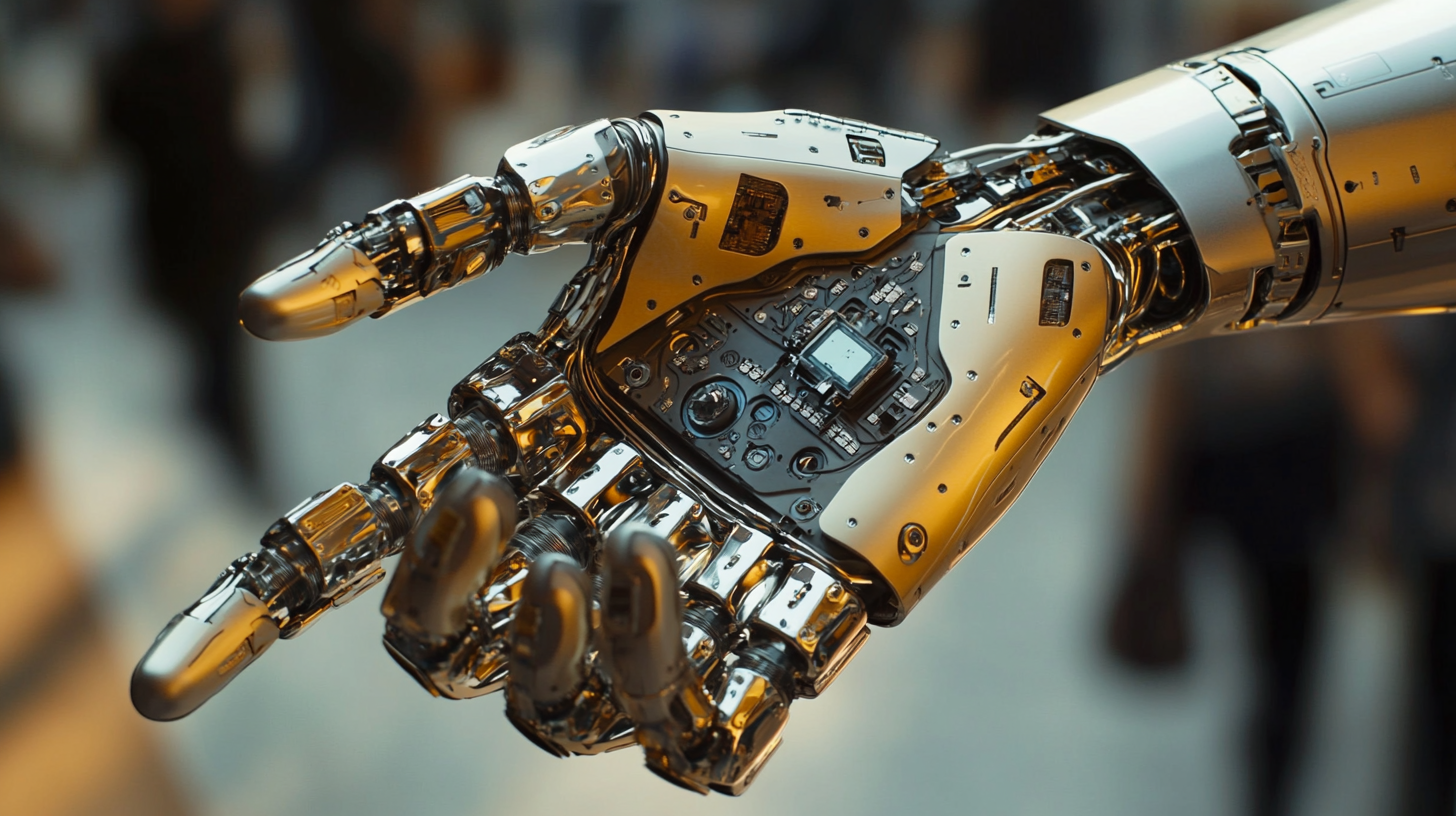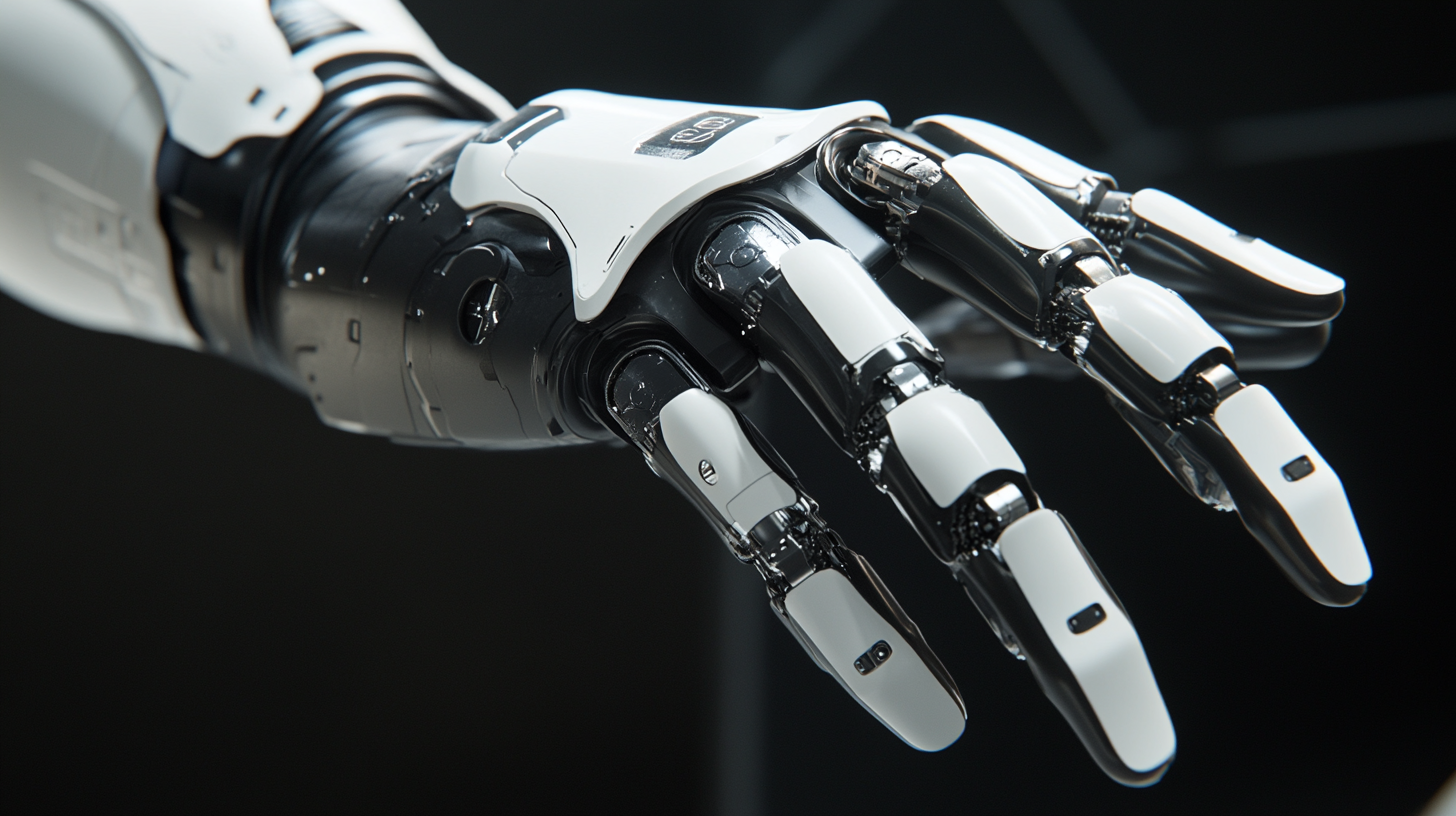Use it to plan your own robot barista payback period.

Want to know more details?
Please, contact your manager.
Aleksandr Maksimovich
Business Development Manager
Nalarobot Robotics | Nalarobot Café
Mobile: +375 333 760 460
(WhatsApp | Telegram | Viber)
BLOG
5 Compelling Benefits of Investing in a Robotic Arm for Your Business Expansion
In today's rapidly evolving industrial landscape, the integration of advanced technologies significantly enhances operational efficiency and competitive advantage. The global robotic arm market is projected to reach approximately $26 billion by 2026, growing at a compound annual growth rate (CAGR) of around 12% from 2021 to 2026, according to a report by Market Research Future. This surge in demand is propelled by the increasing need for automation in various sectors such as manufacturing, logistics, and healthcare. As businesses seek to streamline their production processes, investing in a robotic arm for sale becomes a strategic move to not only enhance productivity but also to adapt to the changing market dynamics.
Moreover, the adoption of robotic arms offers a multitude of benefits, ranging from improved precision and consistency to cost reduction in the long run. According to an analysis by International Federation of Robotics, companies that implement robotic solutions have reported productivity increases of up to 30%. As the barrier to entry lowers, more businesses are exploring the potential of robotic arms as vital assets for their expansion strategies. This blog will delve into five compelling benefits of investing in a robotic arm, showcasing how it can serve as a catalyst for growth and innovation in your business operations.

Advantages of Automation: How Robotic Arms Enhance Productivity in Business
In today’s fast-paced business environment, automation has become a key driver of efficiency and productivity. One of the most significant advancements in this field is the adoption of robotic arms, which have proven to be revolutionary tools for various industries. By integrating robotic arms into their operations, businesses can streamline workflows, minimize errors, and enhance their overall productivity. Robotic arms excel in handling repetitive tasks that would otherwise consume significant human labor and time. For instance, in manufacturing settings, these intelligent machines can perform assembly, welding, and painting with precision and speed. This not only boosts output rates but also allows human workers to focus on more complex and creative aspects of their jobs, ultimately leading to a more dynamic workplace. Moreover, robotic arms operate consistently without fatigue, ensuring that production quality remains high without the dips often associated with manual labor. Additionally, the versatility of robotic arms allows businesses to adapt easily to changing market demands. They can be programmed to handle various tasks, making it simple to shift production lines or modify processes to accommodate new product launches. This adaptability helps organizations stay competitive, reducing downtime and allowing for quicker responses to customer needs. As industries continue to evolve, the strategic implementation of robotic arms will undoubtedly position businesses for sustained growth and success.

Cost Efficiency: Reducing Labor Costs Through Robotic Arm Integration
The integration of robotic arms into business operations has become a game-changer, particularly in reducing labor costs. According to a report by McKinsey, automation could potentially raise productivity by up to 1.4% annually, significantly decreasing reliance on manual labor. By strategically implementing robotic arms, companies can achieve a remarkable drop in labor costs, which typically accounts for about 70% of total operational expenses in manufacturing sectors.
Robotic arms are designed to handle repetitive tasks with higher precision and speed than human workers. Research from the International Federation of Robotics indicates that industries using robotic automation can lower labor costs by approximately 30% within the first year of integration. This reduction is largely due to decreased human error, reduced training costs, and less downtime associated with human workers. Businesses that adopt robotic solutions often experience a direct boost in their profit margins.
Moreover, the initial investment in robotic technology is increasingly becoming justifiable when considering the long-term savings. A study by Deloitte found that many organizations experience a return on investment in less than 18 months. With operational efficiencies improving and labor shortages becoming a significant concern in various sectors, investing in robotic arms not only alleviates immediate labor costs but also positions businesses for sustainable growth in an increasingly automated economy.

Improving Precision: The Role of Robotic Arms in Quality Control
Robotic arms have become pivotal in enhancing precision within quality control processes across various industries. One of the most compelling advantages of integrating robotic arms into manufacturing systems is their ability to conduct inspections with unprecedented accuracy. Recent studies suggest that leveraging AI for inspection can significantly reduce setup times, enabling manufacturers to maintain stringent quality standards without prolonged delays. This transition to AI-driven robotic inspections allows for immediate detection of defects, leading to higher overall product quality.
In particular, the intersection of robotics and AI has sparked advancements in machine vision, which plays an integral role in quality control. Traditional methods struggle to keep pace with the increasing complexity of products on the market today. However, AI-powered solutions can adapt to new inspection challenges, drastically lowering error rates in defect identification. A survey highlighted that 64% of manufacturers are actively exploring AI to enhance product quality, showcasing a growing trend that underscores the importance of precision in manufacturing.
Moreover, the burgeoning industrial robotics market, projected to surge to USD 55.1 billion, indicates a clear demand for solutions that address quality control challenges. East Asia is anticipated to dominate this market, accounting for over two-thirds of the revenue share, reflecting a regional commitment to precision manufacturing through advanced robotic systems. As industries continue to prioritize efficiency and accuracy, robotic arms will serve as the backbone of quality assurance strategies, ultimately bolstering operational performance and product reliability.

Versatility in Application: Industries Benefiting from Robotic Arm Technology
The versatility of robotic arm technology is increasingly evident across a multitude of industries, transforming how businesses operate and expand. From manufacturing to healthcare, these sophisticated machines optimize processes, reduce labor costs, and enhance precision. In manufacturing, robotic arms are instrumental in assembly lines, allowing for faster production rates while maintaining high-quality standards. The ability to perform repetitive tasks with unwavering accuracy frees up human workers to focus on more complex, strategic duties.
In the realm of healthcare, robotic arms are making significant strides, particularly in surgical procedures. They enable surgeons to perform delicate operations with enhanced precision, leading to minimally invasive techniques that reduce recovery times for patients. Additionally, in the field of logistics, robotic arms streamline warehousing processes by automating the picking and packing of goods, thus improving efficiency and cutting down on operational delays. As various sectors embrace this technology, businesses find themselves better equipped to meet the demands of a fast-paced market, highlighting the adaptability and essential benefits of investing in robotic arms for continued growth.
Beyond traditional applications, the versatility of robotic arms extends into agriculture, where they can automate planting, harvesting, and even crop monitoring. This innovation contributes to increased yields and more efficient use of resources, addressing the growing need for sustainable practices. With the ability to tailor these machines for specific tasks, companies across diverse sectors are realizing the immense potential robotic arms hold for enhancing productivity and competitiveness in today's economy.
Future-Proofing Your Business: Staying Competitive with Robotics Investments
Investing in robotics, particularly robotic arms, is becoming increasingly essential for businesses aiming to navigate the ever-evolving market landscape. As highlighted by industry experts, regions like Zhengzhou are emerging as strategic powerhouses for artificial intelligence and robotics innovation. This shift underscores the importance of future-proofing your business. Integrating robotic arms not only automates labor-intensive tasks but also enhances precision and efficiency, thereby increasing overall productivity.
The current competitive environment necessitates that businesses adopt advanced technologies to remain relevant. By making a commitment to robotics, companies can streamline operations, reduce costs, and improve service delivery. For instance, enhancements in manufacturing processes through robotic arms can lead to faster turnaround times and higher-quality outputs, positioning businesses favorably in the marketplace.
Furthermore, as global trends indicate a surge in the demand for robotics across various sectors, now is the opportune moment to invest. Industries that embrace automation are better equipped to adapt to technological changes and consumer demands, ensuring longevity and growth. With robotics expected to play a pivotal role in future industrial landscapes, investing in robotic arms can serve as a key differentiator in maintaining a competitive edge.

